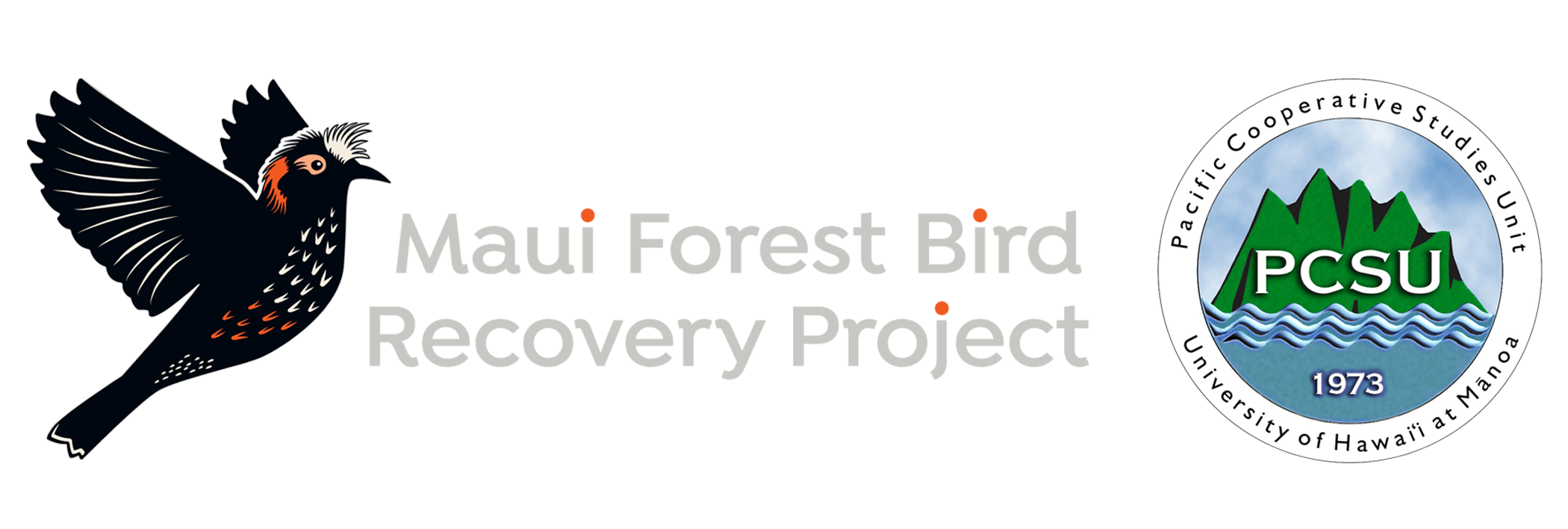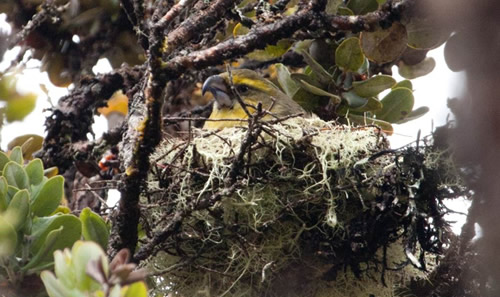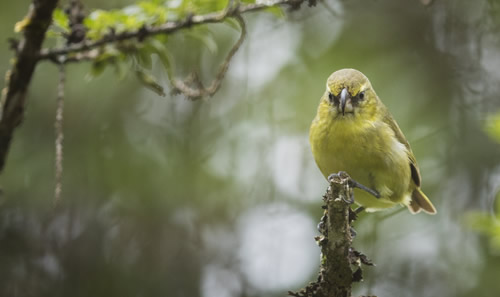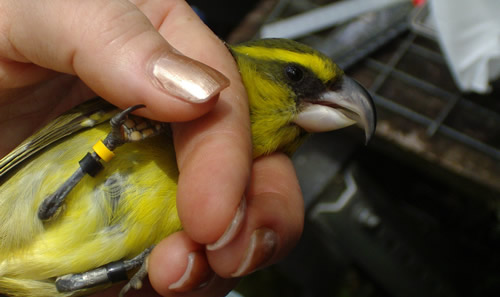Kiwikiu
Maui Parrotbill; Pseudonestor xanthophrys
Kiwikiu or Maui Parrotbill use their large parrot-like beaks to split branches and to extract insect larvae, their primary prey. Adult Kiwikiu are 5 to 6 inches long, olive-green above and yellow below, and have short tails and distinctive yellow eye-stripes. Females tend to be less colorful and have smaller bills than males. Immatures are greyish-olive above and pale yellow below with whitish eye-stripes.



